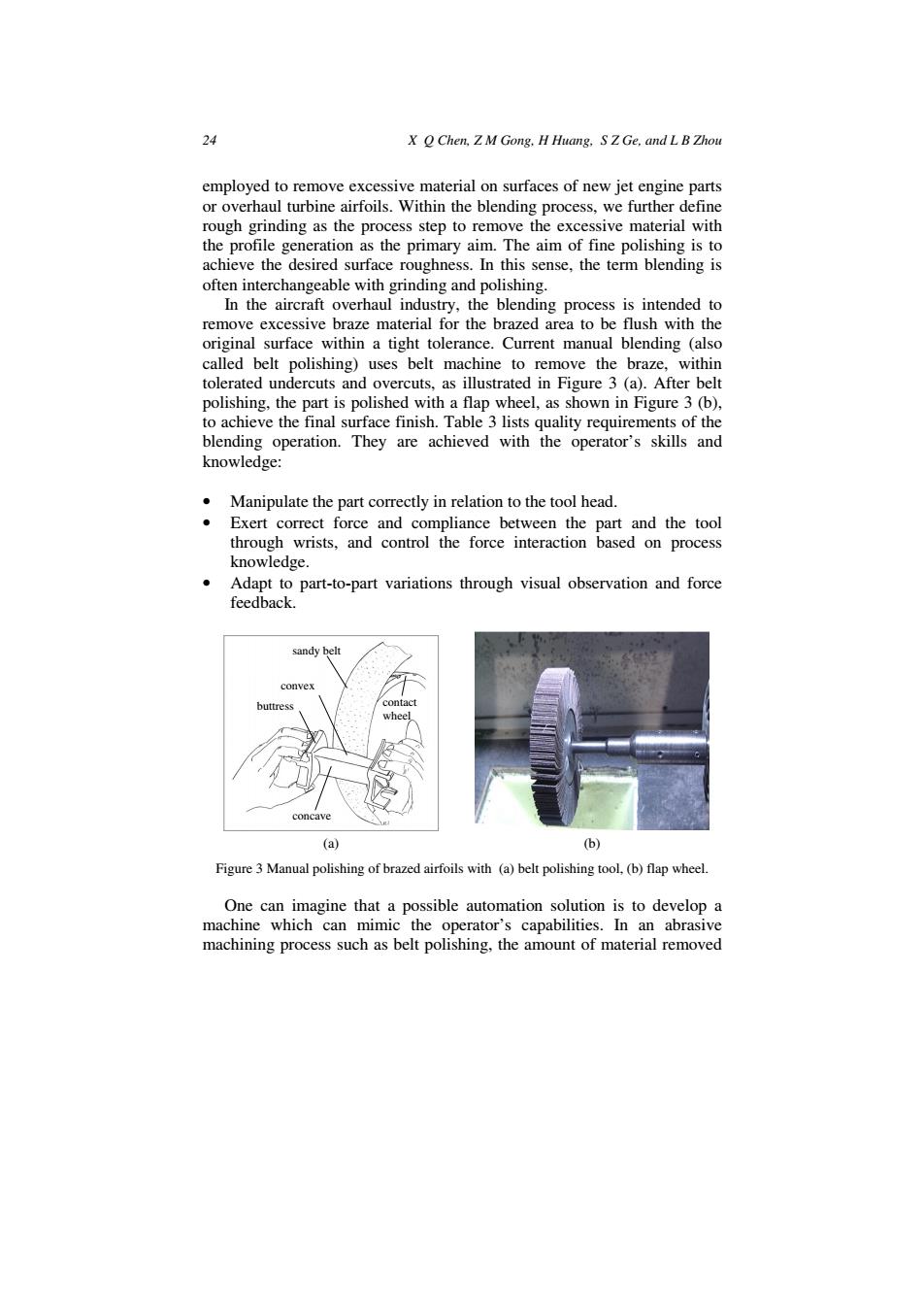正在加载图片...

24 X O Chen,Z M Gong,H Huang,S Z Ge,and L B Zhou employed to remove excessive material on surfaces of new jet engine parts or overhaul turbine airfoils.Within the blending process,we further define rough grinding as the process step to remove the excessive material with the profile generation as the primary aim.The aim of fine polishing is to achieve the desired surface roughness.In this sense,the term blending is often interchangeable with grinding and polishing. In the aircraft overhaul industry,the blending process is intended to remove excessive braze material for the brazed area to be flush with the original surface within a tight tolerance.Current manual blending (also called belt polishing)uses belt machine to remove the braze,within tolerated undercuts and overcuts,as illustrated in Figure 3 (a).After belt polishing,the part is polished with a flap wheel,as shown in Figure 3(b), to achieve the final surface finish.Table 3 lists quality requirements of the blending operation.They are achieved with the operator's skills and knowledge: Manipulate the part correctly in relation to the tool head. Exert correct force and compliance between the part and the tool through wrists,and control the force interaction based on process knowledge. Adapt to part-to-part variations through visual observation and force feedback sandy belt convex concave (a) (b) Figure 3 Manual polishing of brazed airfoils with (a)belt polishing tool,(b)flap wheel One can imagine that a possible automation solution is to develop a machine which can mimic the operator's capabilities.In an abrasive machining process such as belt polishing,the amount of material removed24 X Q Chen, Z M Gong, H Huang, S Z Ge, and L B Zhou employed to remove excessive material on surfaces of new jet engine parts or overhaul turbine airfoils. Within the blending process, we further define rough grinding as the process step to remove the excessive material with the profile generation as the primary aim. The aim of fine polishing is to achieve the desired surface roughness. In this sense, the term blending is often interchangeable with grinding and polishing. In the aircraft overhaul industry, the blending process is intended to remove excessive braze material for the brazed area to be flush with the original surface within a tight tolerance. Current manual blending (also called belt polishing) uses belt machine to remove the braze, within tolerated undercuts and overcuts, as illustrated in Figure 3 (a). After belt polishing, the part is polished with a flap wheel, as shown in Figure 3 (b), to achieve the final surface finish. Table 3 lists quality requirements of the blending operation. They are achieved with the operator’s skills and knowledge: • Manipulate the part correctly in relation to the tool head. • Exert correct force and compliance between the part and the tool through wrists, and control the force interaction based on process knowledge. • Adapt to part-to-part variations through visual observation and force feedback. contact wheel sandy belt convex concave buttress (a) (b) Figure 3 Manual polishing of brazed airfoils with (a) belt polishing tool, (b) flap wheel. One can imagine that a possible automation solution is to develop a machine which can mimic the operator’s capabilities. In an abrasive machining process such as belt polishing, the amount of material removed